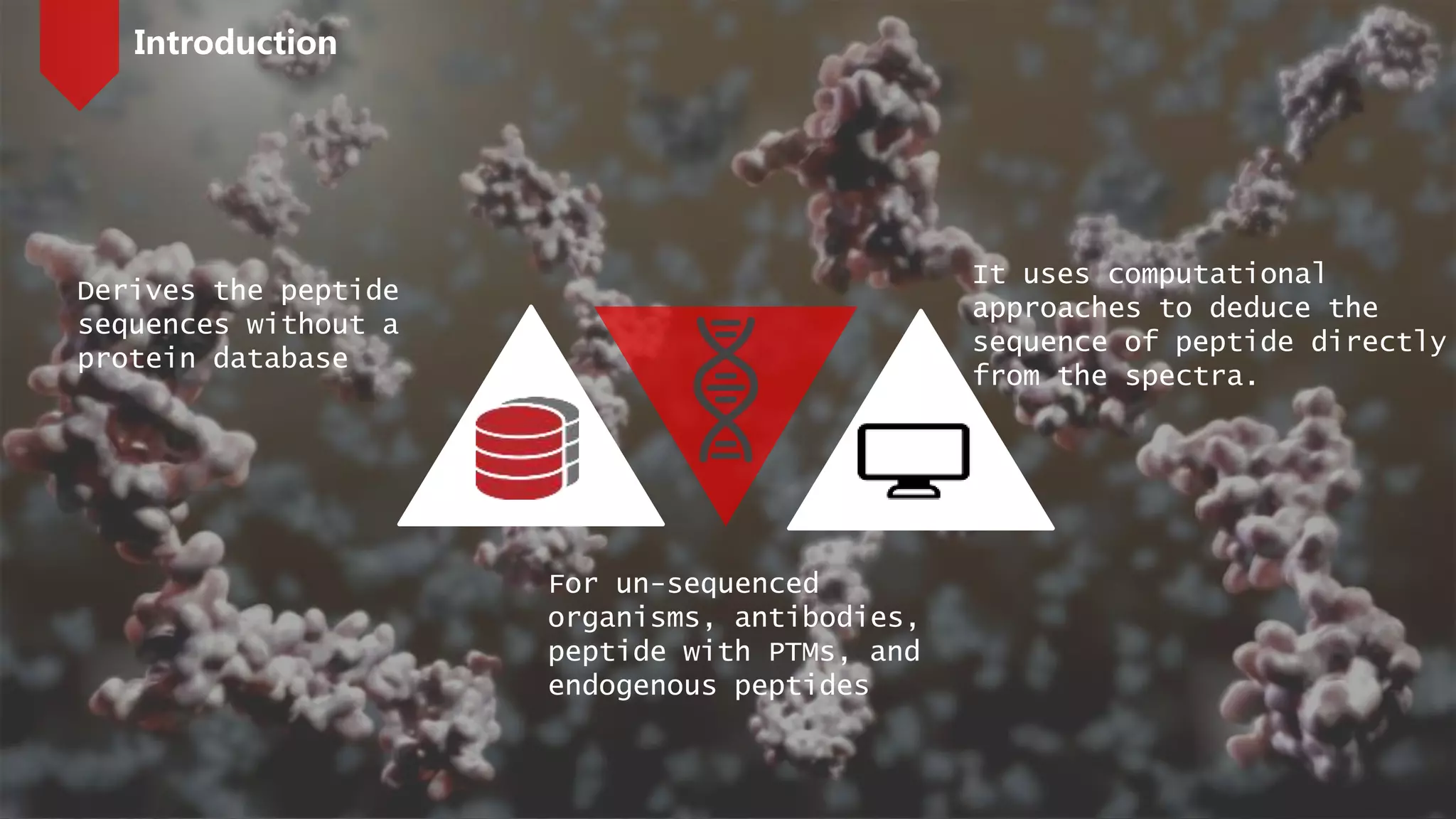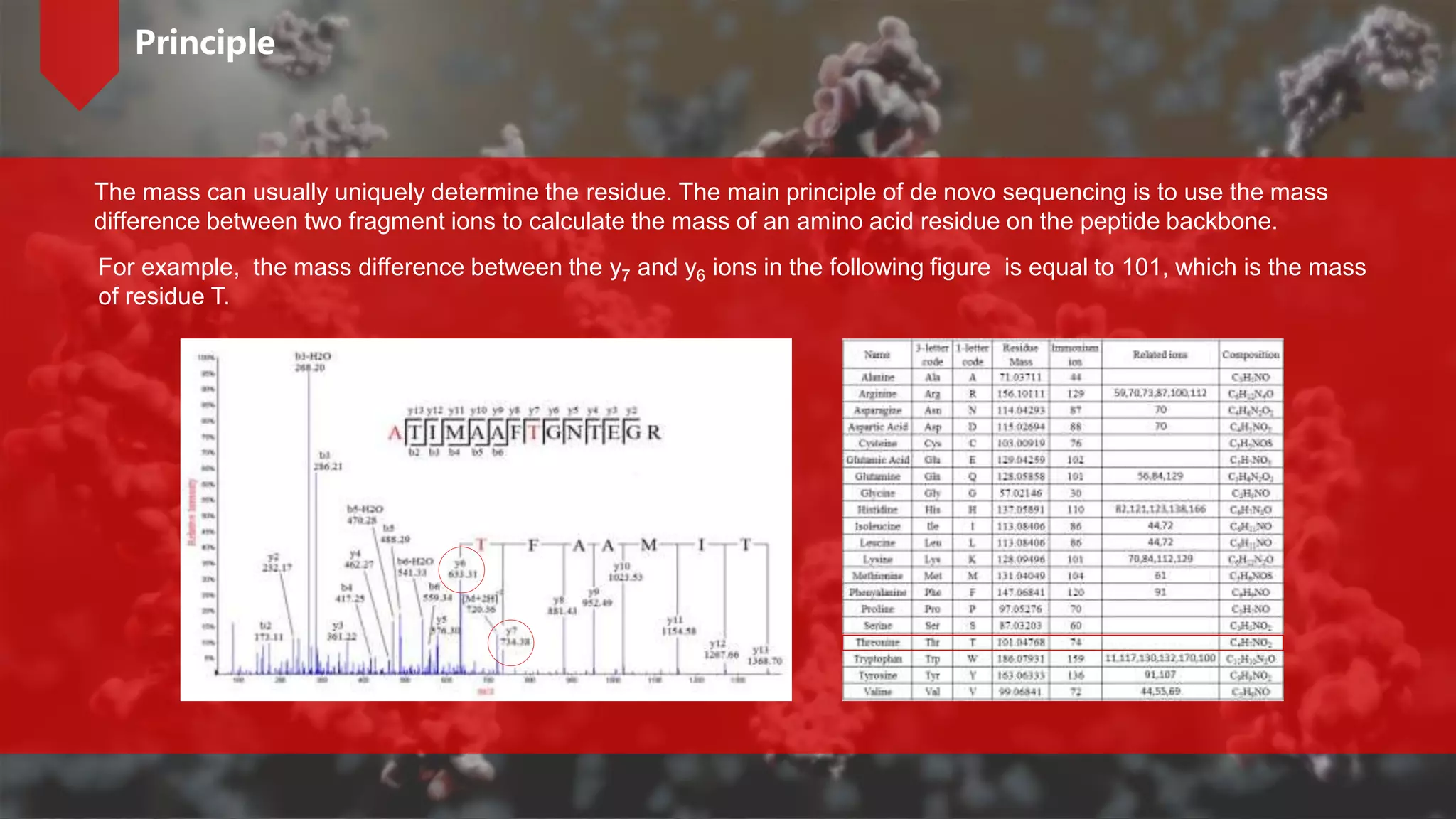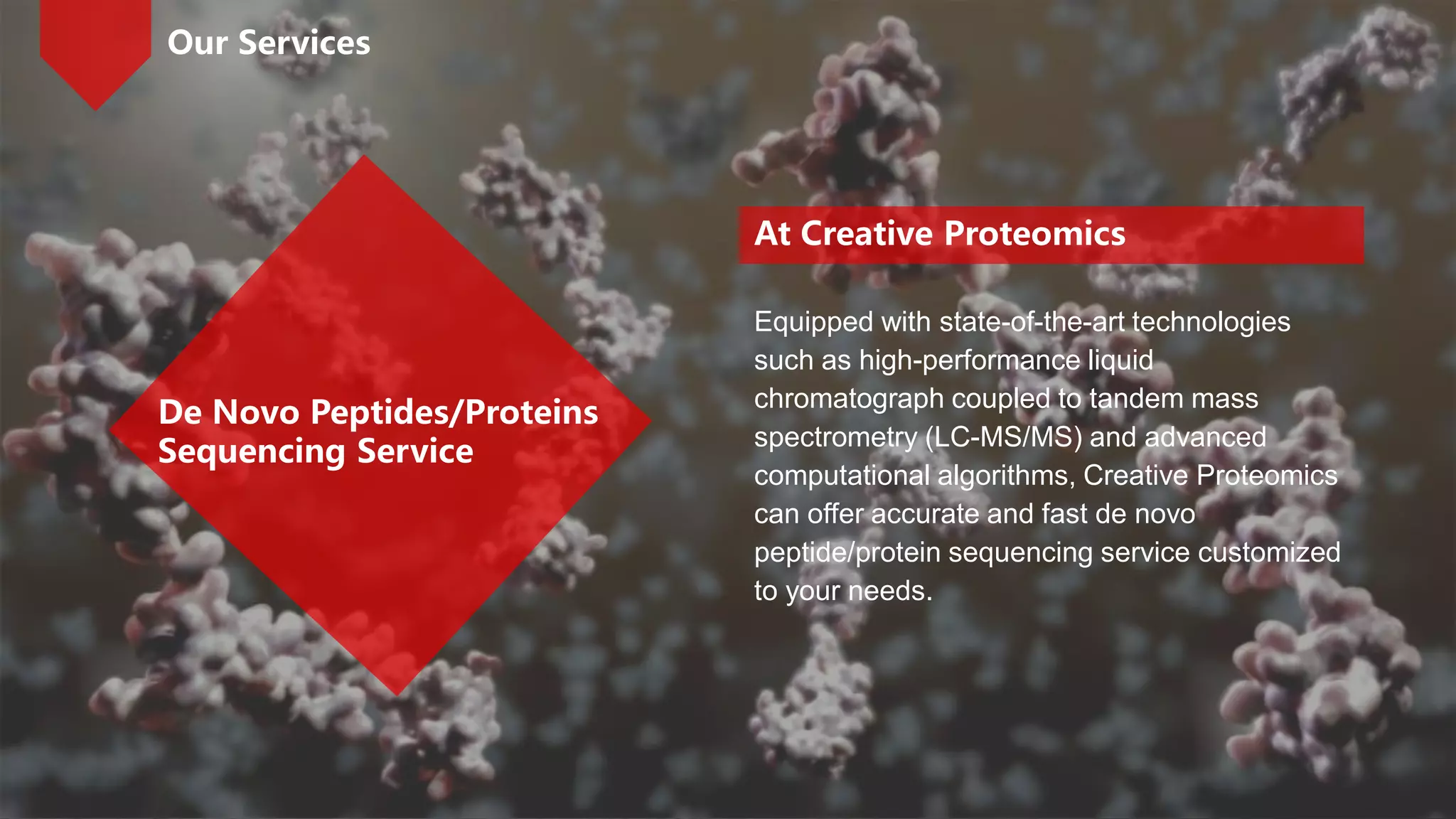De novo peptide sequencing is performed without prior knowledge of the amino acid sequence. It uses computational approaches to deduce the peptide sequence directly from mass spectrometry spectra. The main principle is to use mass differences between fragment ions like y and b ions to calculate amino acid residues. While it can identify previously unknown sequences, there is uncertainty in the complete sequence and difficulty determining directionality sometimes. Creative Proteomics offers de novo sequencing services using high-performance mass spectrometry and computational algorithms.



![ 3 types of backbone bonds can be broken to
form peptide fragments: alkyl carbonyl (CHR-
CO), peptide amide bond (CO-NH), and amino
alkyl bond (NH-CHR)
6 types of fragmentation ions: the N-terminal
charged fragment ions are classed as a, b or c;
the C-terminal charged ones are classed as x,
y or z
Because the peptide amide bone (CO-NH) is
the most vulnerable, the most common peptide
fragments observed in low energy collisions
are a, b and y ions
Peptide fragmentation
Types of fragmentation ions
Figure 1. Different types of fragmentation ions
Ma B, Johnson R. De novo sequencing and homology searching[J]. Molecular & cellular proteomics, 2012, 11(2): O111. 014902.](https://image.slidesharecdn.com/denovopeptidesequencing-creativeproteomics-slideshare-180112082421/75/De-novo-peptide-sequencing-creative-proteomics-4-2048.jpg)





